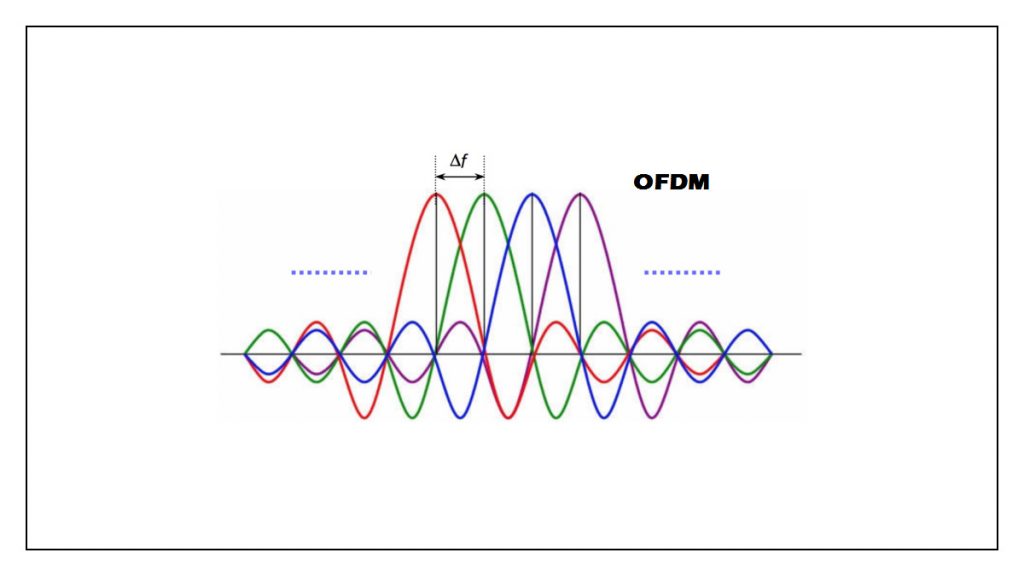Thesis on OFDM
OFDM or Orthogonal Frequency Division Multiplexing is a type of modulation format used in various wireless and telecommunication standards. It has been chosen by various telecommunication standards including LTE/LTE-A, WiMAX and also for broadcast standards. The concept of OFDM is more complex than the traditional signal formats but it has higher data rates and bandwidths. Before writing a thesis on OFDM you need to get an overview of what exactly is OFDM.
What is OFDM?
OFDM or Orthogonal Frequency Division Multiplexing is a type of multi-carrier modulation scheme extending the concept of a single subcarrier modulation by splitting the single data stream into multiple channels at different frequencies. The subcarriers are placed close to each other so that the data can be transmitted in parallel. A receiver should receive the whole signal in order to demodulate the data. For demodulation, Fast Fourier Transform algorithms are used. OFDM comes under the Frequency Division Multiplexing(FDM) scheme. The main advantage that distinguishes OFDM from the single-carrier schemes is that it can withstand irregular channel conditions. To reduce the interference between the different channels, frequency guard band separate each FDM channel. The main points that separate OFDM from the conventional FDM are:
- To carry the data stream, multiple carriers are used.
- The sub-carriers are placed orthogonal to each other.
- For minimizing the channel delay, a guard interval is added with each symbol.
OFDM Techniques
Following are the various techniques involved in OFDM which you will get to know more while working on the thesis on OFDM:
-
Fast Fourier Transform – Fast Fourier Transform or FFT is a method designed to calculate the Discrete Fourier Transform (DFT) and its inverse. This algorithm involves a large number of group theory and number theory computations. To calculate DFT, the values are decomposed into different components by involving different frequencies.
-
De-interleaver – It is a method to perform group as well as block permutations. A bit order permuter is present to perform group permutation for a specific modulation. The bits assignment is permuted to produce permuted subcarrier data that is to be accepted by the secondary stage. The output data obtained at the end is utilized to obtain data in natural data.
-
Channel Decoder – This method is used to achieve hard bits as output into the pseudo-analog values. The soft information thus obtained destroys the MMS estimation.
-
Data Sink – It is a decoding process in which the messages received are translated into code words on account of security issues. Different methods are used to map messages into code words. The messages are transmitted across noisy channels like the binary symmetric channel.
-
Serial to Parallel – A channel is partitioned into various sub-carriers in the OFDM system. The sub-carrier is utilized optimally in regard to the frequency spectrum. Using this technique, a serial bit is transformed into various parallel bit streams.
-
Parallel to Serial – Through this technique, all the sub-carriers are brought together to form one signal in a perfect manner.
PAPR Reduction Techniques in OFDM
Following are the various PAPR reduction techniques in OFDM thesis:
- Partial Transmit Sequence
- Block Coding Technique
- Peak Windowing
- Tone Reservation
- Tone Ejection
- Clipping and filtering
These PAPR reduction techniques in OFDM are divided on the basis of the loss of information.
Different Forms of OFDM
Following are the different forms of OFDM following the basic format of OFDM:
-
COFDM – It stands for Coded Orthogonal Frequency Division Multiplexing in which error correction coding is used.
-
OFDMA – To provide multiple access capability, Orthogonal Frequency Division Multiple Access(OFDMA) scheme is used.
-
VOFDM – Vector OFDM or VOFDM uses the concept of MIMO(Multiple Input, Multiple Output) technologies.
-
Flash OFDM – It is a type of OFDM that uses multiple tones and fast hopping for spreading signals in a spectrum band.
-
WOFDM – It stands for Wideband OFDM that uses a degree of spacing in between the channels.
You will get to know more on these while working on MIMO OFDM thesis report.
Advantages of OFDM
OFDM is used in various wireless systems due to the following advantages it offers:
- OFDM has a high spectral efficiency when compared to other modulation methods.
- It has more resistance to frequency selective fading than the single carrier systems.
- Adaptability to severe channel conditions without any time-domain equalization.
- All data is not lost due to its resilience to interference.
- It provides a fast and efficient implementation using Fast Fourier Transform(FFT).
- Fewer chances of time synchronization errors.
- It makes channel equalization simpler by using multiple subchannels.
Disadvantages of OFDM
Although there are certain advantages of OFDM, there are some drawbacks of this system also which are as follows:
- Doppler shift affects the performance of the OFDM system.
- It has a high peak to average power ratio that affects the amplifier efficiency.
- It is more sensitive to carrier frequency offset and drift than the single carrier systems.
- It requires higher transmission power when compared to other modulation methods.
This was the basic introduction to the concept of OFDM in MIMO. You can get help for the thesis on OFDM at Techsparks. We use MATLAB tool for working on OFDM thesis. You can contact us on this number +91-9465330425 or email us at techsparks2013@gmail.com for any kind of help on this topic. You can also fill the query form on the website. The experts will get in touch with you as soon as possible. Not only just OFDM we also offer thesis help on various other latest topics.





Leave a Reply